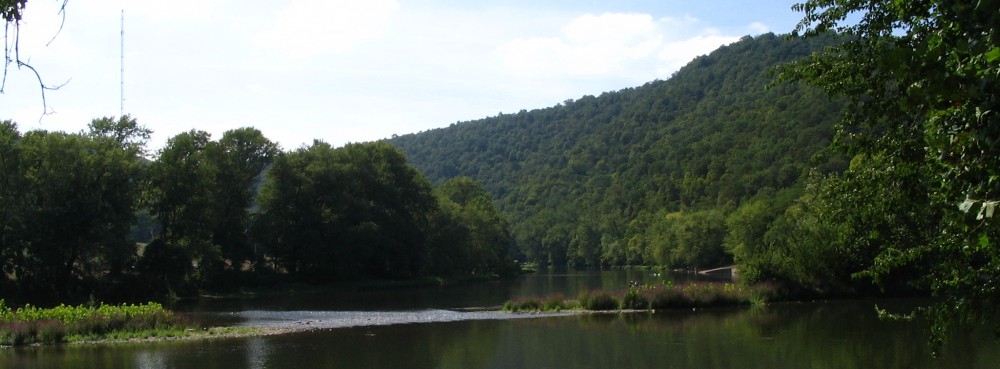The following is taken from “Origin of the Reformed Church in Germany” by James I. Good and our 1900 book and also from notes and records we have received.
Early in the Reformation the Eisenbergs became Protestant. At first our ancestors were Lutherans but when the Reformed Church came into existence at the Diet of Augsburg in 1566, following the leadership of Elector Frederick III in his defense of the Heidelberg Catechism, many started to accept the Reformed faith – many, however, stayed in the Lutheran Church.
For many years in Germany there were conflicts between the Lutheran and Reformed Churches. Generally speaking, the princes of the provinces decided what the religions would be in their territories. This caused much dissatisfaction and often persecution of those whose beliefs did no coincide with their ruler. Many left the country or moved into a more congenial province. For example, in Hesse, central Germany, it was the ruler, Prince Philip, not the theologians, who began converting his subjects to the Reformed Church. But Hesse was nearly the last province to really become predominantly Reformed. For 75 years, from 1527 until 1604, there was turmoil.
Melanchton, a prominent theologian of the time, made a real effort to unite the two Protestant Churches. But his death gave further impetus to the conflict between them.
The Thirty Years War, 1618-1648, a religious and political war, only increased the difficulties of living there. The devastation of the land, castles, and churches in those beautiful provinces where our forefathers lived, resulted in chaos. To add to the worries, Germany suffered a drought of several years that added to the general confusion.
As a result of these problems, many Germans, including our ancestors, took advantage of the interesting offers of land in the New World made by such men as William Penn of the Pennsylvania colony. Thousands of Germans immigrated to the New World.
It is interesting to note that the name Isenberg first appears in German history in the Rhine Valley, east of Coblentz and north of Frankfort-on-the-Main. This part of Germany was converted to Christianity during the years 715-755 by the monk Winfred, who was surnamed Bonifacius. In 900-1008 Gerlach von Isenberg was on e of the counts of the Holy Roman Empire living in the German nation under the Ottos and Henry II. Another one, after returning from the fifth crusade (1228-11229) led by Frederick II of Germany, founded the Beautiful Cathedral of Limburg-on-the Lahn. In the 14th century Arnold von Isenberg became a Cardinal and Archbishop of Trevas (where the fictitious “holy coat of Christ” was kept.) This family, which was a royal one, continued to hold a place in the German Empire, for Prince Karl became a member of the Prussian House of Lords (1900). His sister was the wife of the Emperor Francis Joseph of Austria.
Now we do not mean to assert that our family and the preceding persons are closely related. We simply mean to say that we believe that we are descendants of one and the same German stock. For we know that in every family in Germany, the elder son succeeded the father. The other children did not cease to exist, but in the course of time by the fortunes of life became ministers, tradesmen, mechanics, farmers, etc.
As of today we have been unable to trace a direct connection with any family in Germany. The first German genealogist whom we employed gave us only information on families of the Luteran persuasion and did not include first names such as Gabriel, Enoch, and Simon , which are common in our early New World records. It was when Frau Ilse Ewald-Jahr, a genealogist of Kassel, Germany, was found that we learned about a family of the Reformed Church that carried names common to our family. While we have been unable to find any baptismal records to connect us with this family, we feel that this is our family. Unfortunately, these areas in which this family was found, while in West Germany, are very close to East Germany. It is practically impossible to get records out of East Germany. The following is the record. We have put in the English abbreviations for marriage, birth dates, etc. and changed Gevatter to Godfather.
Generation 1: Hans Eysenhardten, Holdshausen, b. ca 1555, d. June 20, 1637 (Hans Eisenbartt and Liborius Lnaghelt were killed by enemies in Markershausen – 30 year war, 1618-1648)
His son Claus, bap June 11, 1578 His son Hans, bap 1581.
Generation II: His son Jacob, b. ca 1583, d. April 24, 1626, Markershausen His son Peter, b ca 1585, d. August 8, 1616, Archfeld, m. Gedraut His son Curt, bap 1589
Generation III: Hans, son of Jacob, b ca 1605, m. Catherina Langhelt (b. June 25, 1614 daughter of Hans Langfelt) d. January 4, 1682 – b. & d. Markershausen.
Generation IV: Johannes Nicklaus (Hans-Klaus), bap September 13, 1648, Markershausen (Godfather Hans Klaus Raushenstein, Archfeld) d. April 7, 1710, m. (1) November 5, 1577 Geruta Eicholtz, d. May 31, 1683, m. (2) June 18, 1684 Catherina Foss, d. December 24, 1727
Generation V: Enoch , b July 18, 1689, bap July 21, 1689 (Godfather Enoch Romert, Breitzbach), A brother of Enoch was named Gabriel.
Frau Ilse Ewald-Jahr thinks that the above Enoch was the father of the Eisenbergs who came to the New World and are our ancestors. The search will continue to finalize the connection or, if it is proven false, try to find the correct German family.
In the telephone book, Markershausen now belongs to Herslerhausen as do Archfeld and Breitzbach. In Herslerhausen there is a Hotel Eisenberg. In Eschwege there are three families of Eisenbergs. In Luderbach there is one family.

I would be very interested in obtaining a copy of the Isenberg book. Susannah Isenberg Zollmann was my husbands gggg-grandmother and we would love to know more about them.